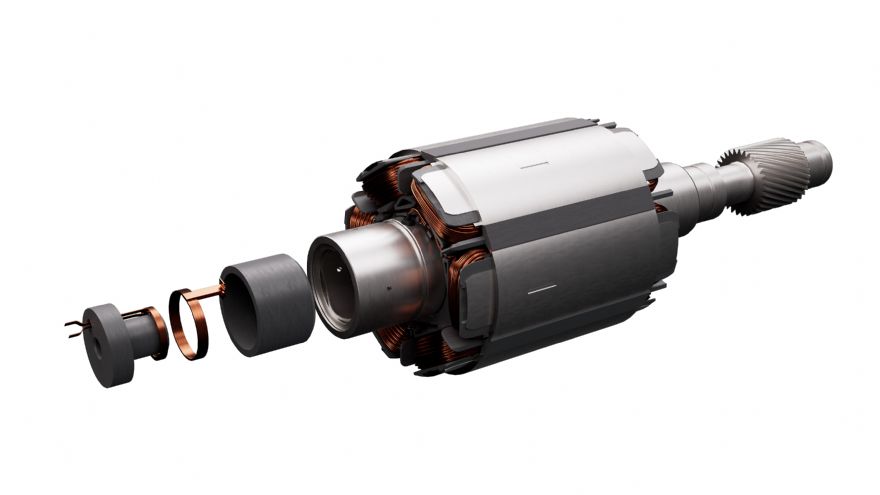
Based in Friedrichshafen, Germany,
ZF has developed an electric motor that does not require magnets and is in contrast to the magnet-free concepts of ‘so-called’ separately excited synchronous motors (SESM) already available today; ZF’s I2SM (In-Rotor Inductive-Excited Synchronous Motor) transmits the energy for the magnetic field via an inductive exciter inside the rotor shaft, an arrangement that makes the motor ‘uniquely compact’ while maximising power and torque density.
ZF’s variant of a separately excited synchronous motor is an alternative to permanent-magnet synchronous machines (PSM) of the type most frequently used in electric vehicles and based on magnets that require ‘rare earth’ materials for their production.
Holger Klein, ZF’s CEO, said: “With this magnet-free e-motor without rare earth materials, we have another innovation with which we are consistently improving our electric drive portfolio to create even more sustainable, efficient, and resource-saving mobility. We currently see no competitor that has mastered this technology as well as ZF.
“Compared to common SESM systems, the inductive exciter can reduce losses for the energy transmission into the rotor by 15%. In addition, the CO2 footprint in production, which arises with PSM e-motors due to magnets including rare earth materials, can be reduced by up to 50%.
“Furthermore, in addition to the benefits of eliminating rare earth materials in a compact and powerful package, the I2SM eliminates the drag losses created in traditional PSM e-motors. This enables better efficiency at certain operating modes, such as long highway trips at high speed.”
The technological prerequisite for the ZF development is that energy is transferred inductively, which means the I2SM does not require any brush elements or slip rings. Furthermore, there is no longer any need to keep this area dry by means of seals (as with permanently magnetized synchronous motor, the rotor is efficiently cooled by circulating oil). Furthermore, compared to a separately excited synchronous motor, ZF’s motor requires up to 90mm less axial installation space, but in terms of power and torque density it operates at the level of a PSM.
ZF plans to develop the I2SM technology to production maturity and offer it as an option within its own e-drive platform. Customers from the passenger car and commercial vehicle segments can then choose between a variant with 400V architecture or with 800V architecture, to suit their respective applications.